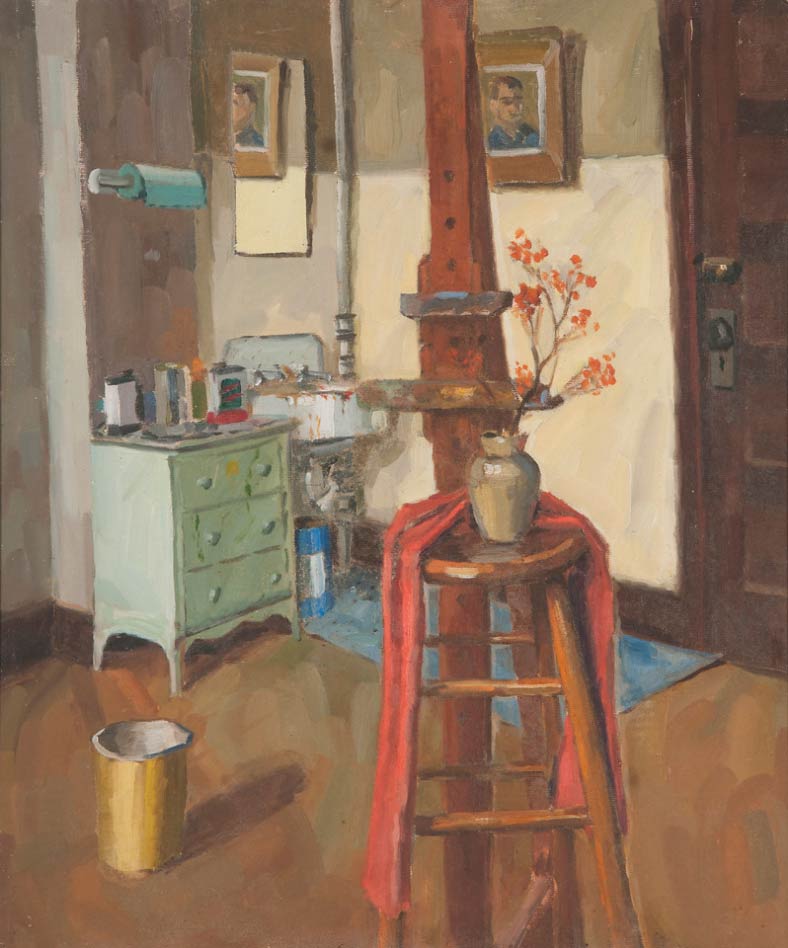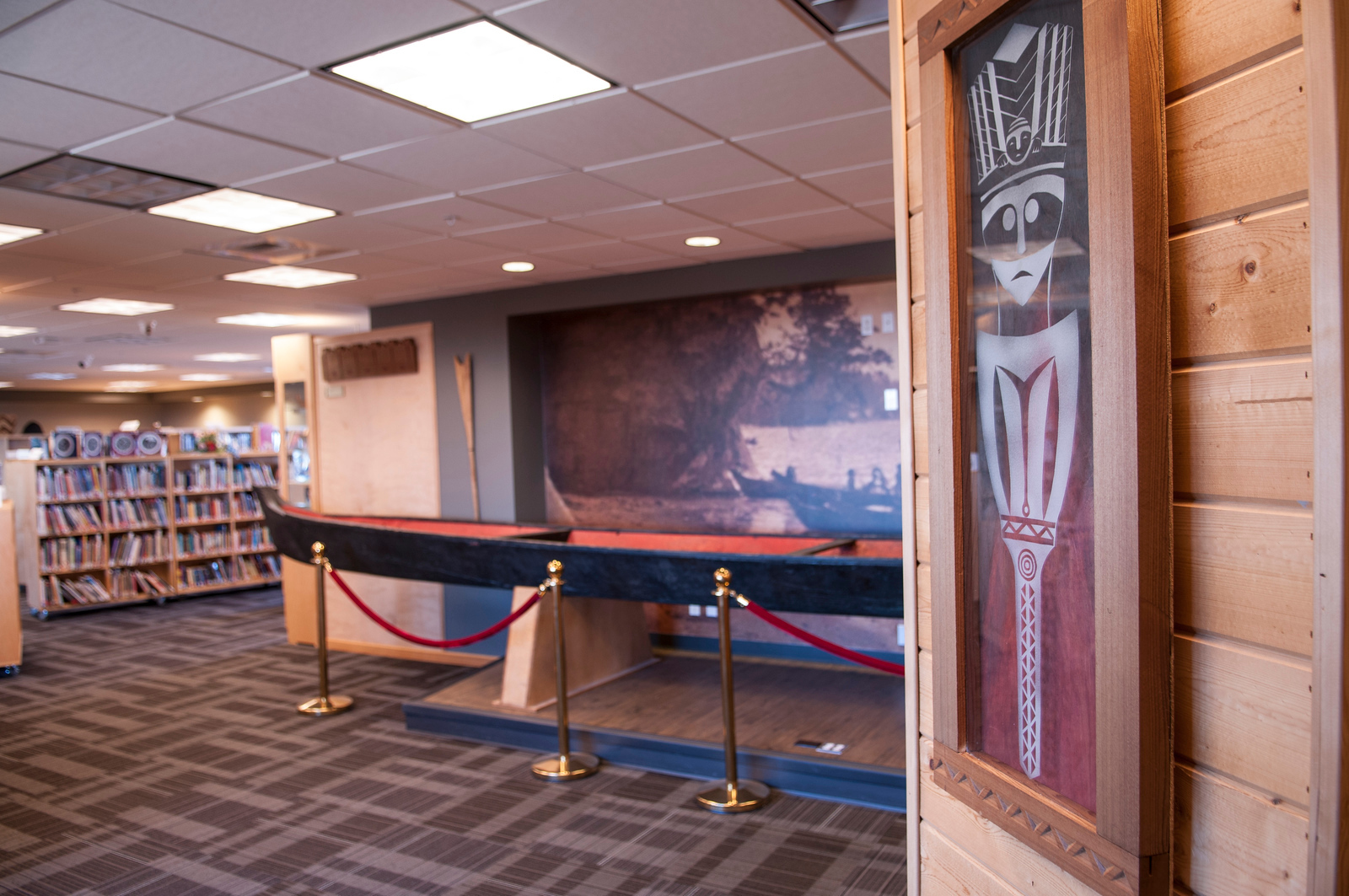
Biography
Eugene Landry
(1937-1988)
Eugene Landry (Hoh and Quileutte) was born in Taholah, Washington and raised on the Shoalwater Bay Indian Reservation in Pacific County, Washington.
At age 18, he was paralyzed by meningitis. He was hospitalized at Cushman Indian Hospital, near Tacoma, for two and a half years. In 1958, his parents, Fred, and Myrtle Landry, moved from the reservation to Tacoma so their son would be closer to the services he needed. Eugene, a paraplegic, completed his high school degree, graduating from Lincoln High School as a “homebound student” in 1960. After that, the family moved to Seattle, where Eugene enrolled in art school.
Eugene returned to art school and learned to use his non-dominant (left) hand to draw and paint.
He attended the Leon F. Derbyshire School of Art from 1960 to 1964, and also studied with sculptor Philip Levine. When Eugene started art school, he was right-handed. However, during a stay at a physical rehabilitation facility, he was dropped by attendants; the right side of his upper body was almost completely paralyzed. After a period of recovery, Eugene returned to art school and learned to use his non-dominant (left) hand to draw and paint.
Eugene Landry and Anita Kennedy, outside his dome, 1979
Seattle Studio: oil on canvas, 24”x20”
1965, Marriage & Travel
Eugene & Artist, Sharon Billingsley
In 1965, Eugene married fellow art student, Sharon Billingsley. The couple traveled to California, Mexico, and Paris, and lived for several years in Seattle. Their life together revolved around art making. It was a prolific time for Eugene; he exhibited at many NW regional festivals and juried shows, including the Puget Sound Exhibition at the Frye Art Museum, and had several solo shows.
Moving Home
1969 in the Shoalwater Bay Reservation
In 1969, Eugene moved back to the Shoalwater Bay reservation. Here, he painted a series of portraits of friends and family. The work spans a pivotal time in the tribe’s history, from near termination to federal recognition, and is now on display at the tribe’s heritage museum.
Shoalwater Bay tribal member Mary (Davis) Downs with her portrait by Landry. The painting was found in the attic, exactly 50 years after it was painted. Photo by Marcy Merrill.
Brown’s Point: 1978, ink and watercolor print, 12”x16”
The Early 70s
In the early 70s, as Eugene’s physical condition deteriorated, he began using a brush in his teeth to reach parts of the canvas. His style evolved, incorporating personal symbology, such as bones and feathers. By the end of the decade, he had switched mediums, focusing on ink and watercolor scenes of decaying boats.
he channeled his creativity to
supporting other artists
At about age 40, plagued by increasing health issues, he chose to stop making art. After that, he channeled his creativity to supporting other artists, by opening a gallery in Santa Barbara in the early ‘80s. He died in 1988, aged 50.
“Eugene’s art is so much more than just one man’s view of the world. It highlights a turning point in tribal history. Many of our elders, when viewing Eugene’s work, reflect upon those times and begin sharing those stories with us. I doubt that he ever intended his work to be such important cultural cues, but that’s exactly what they have become.”
–Earl Davis, cultural director of the Shoalwater Bay museum
Landry’s art transcended his limitations. Our mission is to share his art—and his story—with the world.
Eugene’s art is so much more than just one man’s view of the world, it highlights a turning point in tribal history. Many of our elders, when viewing Eugene’s work, reflect upon those times and begin sharing those stories with us. I doubt that he ever intended his work to be such important cultural cues, but that’s exactly what they have become
“Eugene’s art is so much more than just one man’s view of the world, it highlights a turning point in tribal history. Many of our elders, when viewing Eugene’s work, reflect upon those times and begin sharing those stories with us. I doubt that he ever intended his work to be such important cultural cues, but that’s exactly what they have become.”
— Earl Davis, cultural director of the Shoalwater Bay museum
Landry’s art transcended his limitations. Our mission is to share his art—and his story—with the world.
Contact Us
Contact Form
Shoalwater Bay Tribe
Community Library and Heritage Museum
Museum Hours
Tuesday — Saturday, 9 a.m. to 5 p.m.
Call for information: (360) 267-8130
Getting To the Museum
4115 State Route 105 Tokeland, WA, 98590
Open Google Map









